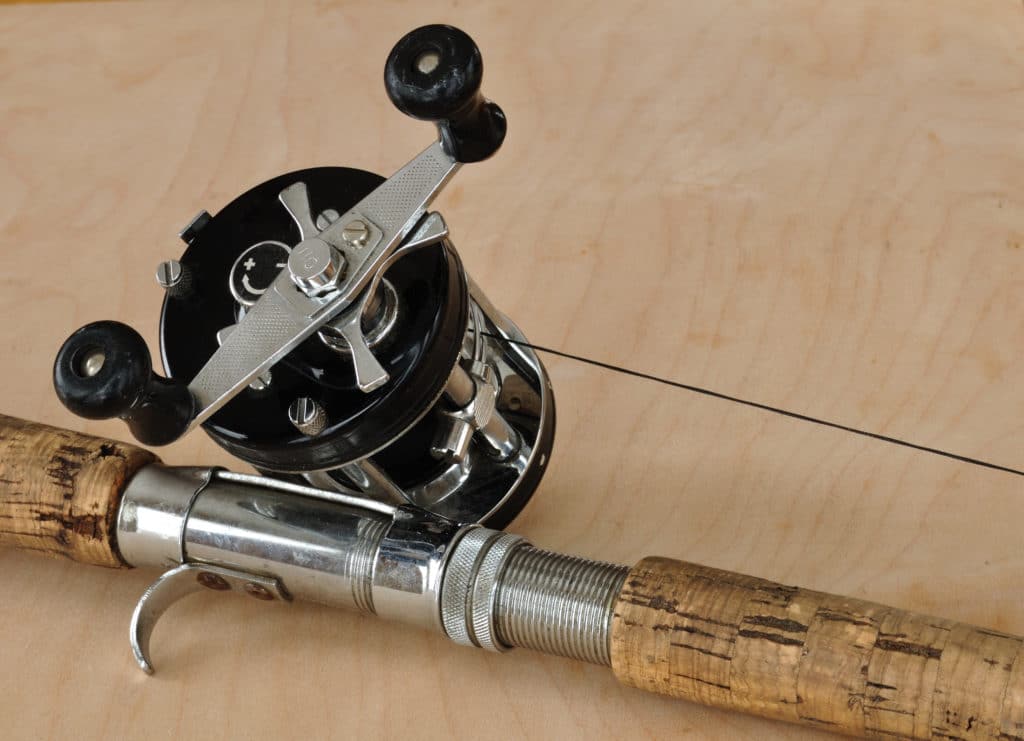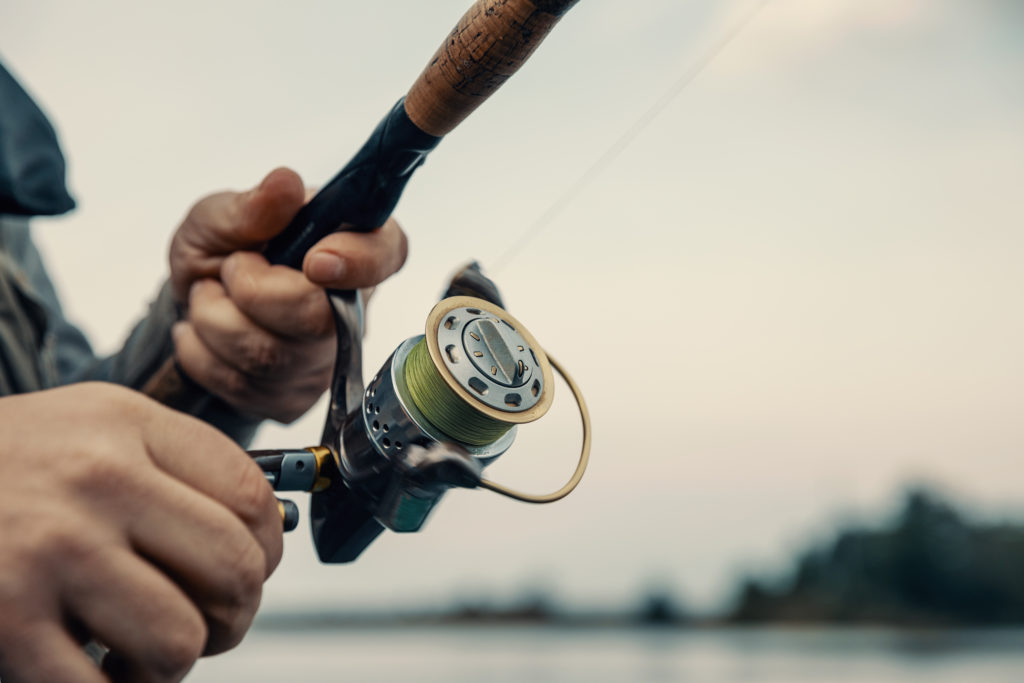For those new to fishing, it might be surprising all the choices you have available.
Each of these choices will change the outcome of your fishing success.
Not only do you have to choose between rides but the reels play an essential factor in the overall performance of your gear.
Let’s start with the basics. A reel is a mechanical device attached to the rod that allows the fishing line to be stored and released.
Most of the time, experienced fishermen prefer one type of reel, which may change from location to the type of fish they are looking to obtain.
Two of the most popular types of fishing reels are baitcasters and spinning reels.
But why do some fishermen feel that bait casters are better than spinning reels? And why are baitcasters better than spinning reels?
We are going to look at each of these rules to determine why this is a popular take when it comes to a reel. So without further ado, let’s get into it.

Contents
All About Spinning Reels
This type of reel should not be confused with the spincaster reels that many budget rides are mounted with.
A spinning reel is actually a preferential option by many experienced anglers the world over.
It is a relatively easy model to use no matter your experience level, but unlike spincaster reels, the housing is left open so that you can see the fishing line as it balls around the spinner.
This means that spinner wheels are crafted with an open face and a metal bail arm that helps guide the line from the nesting through the cast.
Like spincaster reels, spinning reels are designed with drag adjustment, but it is located at the top of the reel.

How Is a Spincaster Used
Spinner reels give the angler more control than basic spincast reels.
In reels like this, you want to unlock the line by disengaging the metal bail and then holding onto the line via your index finger.
Stop the line from unspooling as you begin to start your cast.
As you’re casting, you’ll want to let go of the fishing line with your index finger and let the line drift through the air.
In order to keep the reel from unschooling too much, you’re going to have to move the bail arm back into the starting position by turning a crank after the cast is completed.
Spinner reels are perfect for any type of fishing.
They can be used for throwing artificial lures or even with bait.
They are perfect for fishing with legs or barbers and can even be used when diving into ice fishing.
Spinning Reel – Pros & Cons
Attaching a high-quality spinning reel to your fishing rod can bring with it a lot of advantages.
Most spinning reels are crafted using high-quality materials, which means they’re more durable than the standard spin casters that are often outfitted on more budget fishing rods.
This makes for better balance, allowing the angler to use a variety of fishing techniques.
This type of fishing reel also allows for better control when it comes to things like drag, casting distance, and speed.
It can be utilized as a setting for style fishing reel as it is perfect for rod holders.
There is a wide range of spinning reel auctions, but they often find themselves being more budget-friendly than a baitcaster reel.
Another advantage for anglers is that this type of fishing reel is very easy to utilize, whether you are right-handed or left-handed.
Also, this type of reel is perfect for light lures and bait and is able to be used in a wide range of habitats.
That being said, spinner reels do have a few pitfalls.
They are perfect for those who like to use heavier lures and are looking to catch larger fish like halibut.
Along with this, the bail has to be used appropriately to prevent tangles and they are more expensive than a lot of other types of fishing reels.
All About Baitcasters
These types of fishing reels are designed to sit on top of the fishing rod.
They can be used with monofilament calibrated fluorocarbon lines as well.
This line comes off the baitcaster reel spool in line with the rod.
While baitcasting, the reel spool is designed to move with the line as it is cast.
That means that this type of fishing reel is best suited for an experienced angler who understands how to keep it in control.
Those that are experienced may find it moving a little too fast and end up with a knotted mess of fishing line at the end of the cast.
It is a more advanced reel, it offers a water facility when it comes to the types of lures, lines, and baits that can be used while fishing depending on the angler’s preferences.
How Is a Baitcaster Used
Baitcaster reels are a perfect reel type when it comes to fishing in crowded water.
They are also great for river fishing in areas with many anglers around.
When utilizing this type of reel, you will want to use your dominant hand to hold the rod while you cast and then switch to the other hand while in a cast so that your dominant hand controls the reel.
More experienced anglers can utilize their thumb as a break to control their line with ease to prevent several troubling issues like backlash or nesting.
Utilizing a baitcasting reel you want to release, once you have pressed the button, you can watch as your rod releases the line, instantaneously dropping your bait.
In order to cast, you want to return to lock the line, and then when the cast is done, pop the reel handle back into place to set the line (or for those with an educated thumb put them back on this spool).
Baitcaster – Pros & Cons
When it comes to baitcaster reels, there are many key advantages to explain a preference for this style of reel.
Maybe the biggest is the fact that these wheels are quite durable.
They are designed to be lightweight and low-profile, so they are able to stand up to rigorous use in a plethora of different situations.
Along with this, there is a versatility of use as they can be utilized in a wide range of places as well as with heavier lines and heavier lures.
Because of this, they can be used for larger-sized fish primarily thanks to their incredible drag capabilities.
On top of all that, this type of reel can hold more lines and is highly customizable so that the angle can create a reel that works for them and their fishing style.
While there are many wonderful positive attributes to these, there are still a few issues that may cause this to be a poor choice for the angler.
Baitcasters can be a bit on the pricey side.
On top of that, they are not a great choice for beginners because they have a high learning curve.
They can be pretty challenging for left-handed anglers as well.
Along with this, the baitcaster reel does suffer from quite a backlash issue.
This is when the line suddenly bunches on the spool.)
Baitcaster Vs. Spinning Reel: Why Are Baitcasters Better Than Spinning Reels?
When you look at the baitcasting reel vs. spinning reel debate, it really boils down to the type of fish you are looking to catch.
Casting reels are perfect for bass fishing which usually uses heavier lures. On the other hand, if you are looking for more finesse and plan to use a lighter lure, then a spinning reel is the better option.
Baitcast reels have some negative qualities when used in backlash-prone conditions, but most fishermen prefer the baitcaster.
This is especially true when dealing with places with heavy cover where you have to be completely accurate with your cast to ensure no snagging.
Along with that, baitcasting reels are perfect for bass fishing off of boats or kayaks.
Final Thoughts
The truth is that bait caster wheels are simply a preference and they do have areas of angling that are far superior to the spinning reel.
In the end, the most significant key advantage of a baitcasting reel is the ability to cast further.
That means if you have the right rod and reel combo, you can utilize it in a wealth of different areas.
This is especially true for looking for surfcasting as you have to cast further to get out into the depths to find the right fish.
It is true that baitcasters outperform spinning reels most of the time.
We hope that our look at these two types of reels has helped you figure out which one is the right one for you.
Armed with this knowledge, you can make the right choice for you and your fishing needs.







